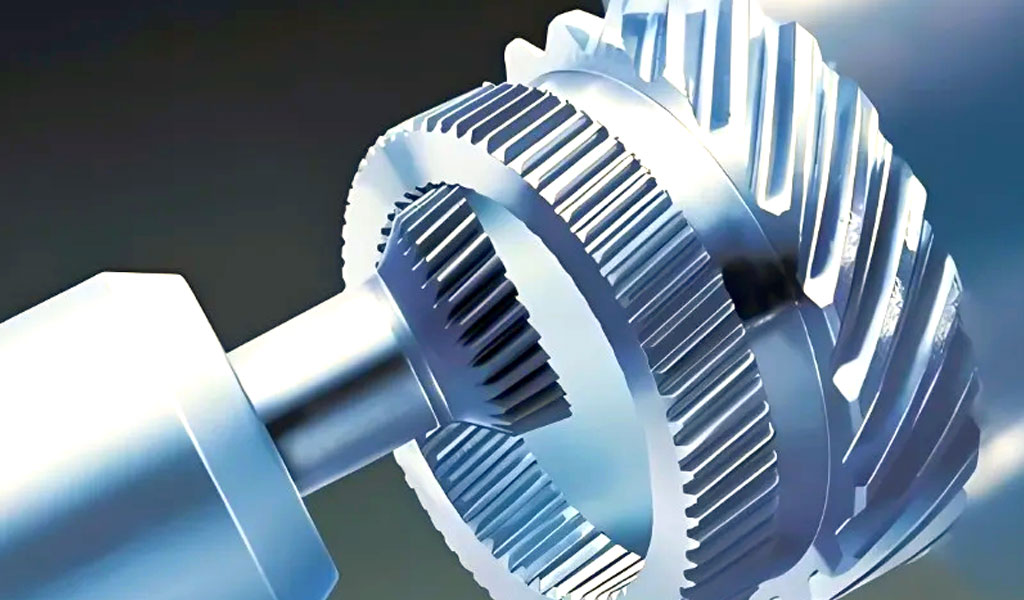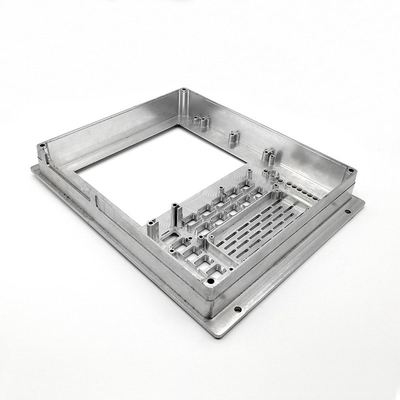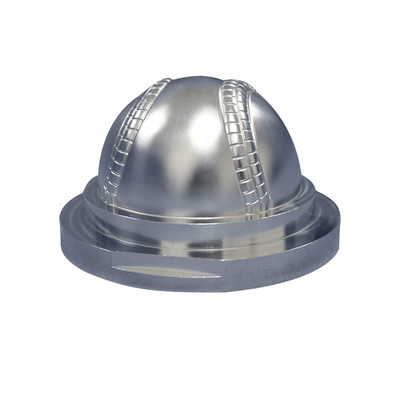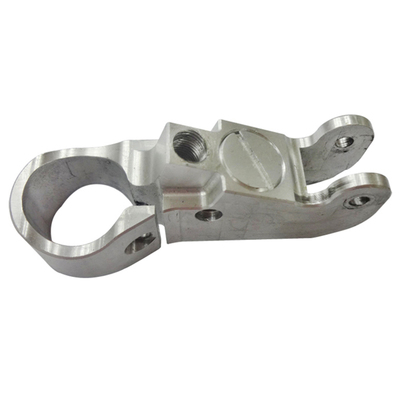Multi-Axis Dynamic Stability Domain Modeling of Thin-Walled Titanium Alloy Complex Components

Titanium alloys are widely utilized in industries such as aerospace, automotive, and biomedical engineering due to their exceptional properties, including high strength-to-weight ratio, corrosion resistance, and ability to withstand extreme temperatures. Thin-walled titanium alloy components, particularly those with complex geometries, are critical in applications requiring lightweight, high-performance structures, csuch as aircraft fuselages, turbine blades, and medical implants. However, the machining and operational performance of these components are often challenged by dynami instabilities, such as chatter and vibration, which arise due to their low rigidity and complex multi-axis loading conditions. Multi-axis dynamic stability domain modeling is a critical methodology for predicting and mitigating these instabilities, ensuring precision, surface quality, and structural integrity during manufacturing and service.
This article provides a comprehensive exploration of multi-axis dynamic stability domain modeling for thin-walled titanium alloy complex components. It delves into the theoretical foundations, modeling techniques, experimental validations, and practical applications, emphasizing the challenges posed by material properties, geometric complexity, and multi-axis machining dynamics. The discussion is structured to address key aspects, including material characteristics, dynamic modeling approaches, stability prediction methods, and comparative analyses through detailed tables. The objective is to present a rigorous, scientific examination suitable for researchers, engineers, and practitioners in materials science and mechanical engineering.
Titanium Alloys and Their Applications
Properties of Titanium Alloys
Titanium alloys are prized for their unique combination of mechanical and chemical properties. They exhibit a high strength-to-weight ratio, with tensile strengths often exceeding 1000 MPa while maintaining densities as low as 4.5 g/cm³, significantly lighter than steel. Their corrosion resistance stems from the formation of a stable titanium oxide layer, making them ideal for harsh environments, such as marine and aerospace applications. Additionally, titanium alloys maintain structural integrity at elevated temperatures, with some grades performing reliably up to 600°C.
Common titanium alloys, such as Ti-6Al-4V (Grade 5), dominate industrial applications due to their balanced alpha-beta phase structure, which combines the strength of the hexagonal close-packed (HCP) alpha phase with the ductility of the body-centered cubic (BCC) beta phase. Other alloys, like Ti-5Al-2.5Sn and Ti-6Al-2Sn-4Zr-2Mo, are tailored for specific applications requiring enhanced weldability or creep resistance. The incorporation of alloying elements, such as aluminum (alpha stabilizer) and vanadium (beta stabilizer), allows for precise control of mechanical properties, but also introduces complexities in machining and dynamic behavior.
Thin-Walled Components in Industry
Thin-walled components, defined as structures with a thickness-to-length ratio typically less than 1:10, are prevalent in aerospace engineering, where weight reduction is paramount. Examples include aircraft skins, turbine blades, and satellite structural panels. These components often feature complex geometries, such as curved surfaces, variable thicknesses, and intricate cutouts, which complicate their manufacturing and operational stability. The low stiffness of thin-walled structures makes them susceptible to deformation and vibration under cutting forces or dynamic loads, leading to challenges in maintaining dimensional accuracy and surface quality.
In biomedical applications, thin-walled titanium alloy components are used in implants, such as hip stems and dental fixtures, where biocompatibility and lightweight design are critical. The automotive industry also employs these components in high-performance vehicles for components like exhaust systems and suspension springs, leveraging titanium’s durability and corrosion resistance.
Challenges in Multi-Axis Machining
Multi-axis machining, typically involving three to five axes, is employed to fabricate complex thin-walled titanium alloy components. This process enables precise control over tool orientation and workpiece positioning, allowing for the creation of intricate geometries. However, the dynamic interaction between the cutting tool, workpiece, and machine tool introduces significant challenges. The low rigidity of thin-walled structures leads to regenerative chatter, a self-excited vibration that degrades surface finish and tool life. Additionally, the non-linear dynamic characteristics of titanium alloys, influenced by material removal and process damping, complicate stability predictions.
Multi-axis dynamic stability domain modeling addresses these challenges by mapping the stable operating conditions (e.g., spindle speed, depth of cut) in a multi-dimensional parameter space. This approach accounts for the coupled dynamics of the tool, workpiece, and machine, considering factors such as tool geometry, cutting parameters, and material properties.
Theoretical Foundations of Dynamic Stability Modeling
Fundamentals of Machining Dynamics
Machining dynamics involves the study of the dynamic interactions between the cutting tool and workpiece during material removal. For thin-walled titanium alloy components, these interactions are governed by the following key factors:
-
Regenerative Chatter: This occurs when the cutting tool vibrates, leaving a wavy surface that interacts with subsequent tool passes, amplifying vibrations. The phenomenon is modeled using delay differential equations (DDEs), which account for the time delay between consecutive tool passes.
-
Process Damping: At low spindle speeds, frictional interactions between the tool’s flank face and the workpiece introduce damping, stabilizing the process. This is particularly relevant for titanium alloys, which are machined at low speeds due to their low thermal conductivity and high chemical reactivity.
-
Multi-Mode Dynamics: Thin-walled structures exhibit multiple vibration modes due to their complex geometries and varying stiffness. These modes couple with the tool’s dynamics, necessitating multi-degree-of-freedom (MDOF) models.
-
Multiple Delays: Non-uniform pitch or helix angles in multi-axis milling introduce multiple time delays, further complicating stability predictions.
The governing equations for machining dynamics are typically expressed as:
[ M \ddot{x}(t) + C \dot{x}(t) + K x(t) = F_c(t - \tau) ]
where (M), (C), and (K) represent the mass, damping, and stiffness matrices, respectively; (x(t)) is the displacement vector; (F_c(t - \tau)) is the cutting force with time delay (\tau); and (\dot{x}(t)) and (\ddot{x}(t)) denote velocity and acceleration.
Stability Lobe Diagrams
Stability lobe diagrams (SLDs) are a cornerstone of dynamic stability modeling, mapping stable and unstable regions in the parameter space of spindle speed and axial depth of cut. For thin-walled components, SLDs are three-dimensional, incorporating the effect of material removal on dynamic characteristics. The diagrams are derived by solving the characteristic equation of the dynamic system:
[ \det[I - G(\omega) A(\omega)] = 0 ]
where (G(\omega)) is the frequency response function (FRF) of the system, and (A(\omega)) is the directional cutting force coefficient matrix. The solution yields the critical depth of cut, below which the process remains stable.
For multi-axis milling, SLDs must account for varying tool orientations and workpiece geometries, leading to position-dependent dynamic characteristics. The lowest envelope method (LEM) is often used to predict ultimate stability by considering the most flexible mode at each milling position.
Process Damping and Material Removal Effects
Process damping arises from the interaction between the tool’s flank face and the workpiece surface, particularly at low spindle speeds. The ploughing coefficient, derived from the energy balance principle and frequency-domain decomposition (FDD) of vibration signals, quantifies this effect. For titanium alloys, the low thermal conductivity leads to heat accumulation, altering the damping coefficient during machining.
Material removal significantly affects the dynamic characteristics of thin-walled components. As material is removed, the workpiece’s natural frequency increases, while its stiffness and damping ratio decrease, reducing vibration resistance. This necessitates dynamic updating of the system’s FRF in stability models, often achieved through structural dynamic modification techniques.
Modeling Approaches for Multi-Axis Dynamic Stability
Frequency-Domain Methods
Frequency-domain methods, such as those proposed by Budak and Altintas, solve the stability problem by analyzing the system’s FRF. The multi-frequency solution accounts for the periodic variation of cutting forces in multi-axis milling, considering both average and fluctuating components. The method is computationally efficient for single-mode systems but becomes complex for multi-mode systems due to the coupling of multiple frequencies.
The generalized frequency-domain model for titanium alloy milling incorporates process damping, multiple modes, and multiple delays, expressed as:
[ G(\omega) = \sum_{i=1}^N \frac{\phi_i \phi_i^T}{\omega_i^2 - \omega^2 + 2 \zeta_i \omega_i \omega j} ]
where (\phi_i), (\omega_i), and (\zeta_i) are the mode shape, natural frequency, and damping ratio of the (i)-th mode, respectively, and (N) is the number of modes considered.
Time-Domain Methods
Time-domain methods simulate the dynamic response of the machining system by numerically integrating the DDEs. The full discretization method, for instance, discretizes the time delay and solves the system iteratively, providing high accuracy for complex systems with multiple delays and modes. The Gaussian quadrature-based method extends this approach by improving computational efficiency through optimized numerical integration.
Time-domain methods are particularly suited for thin-walled components, where dynamic parameters vary with material removal. The Kriging surrogate model, combined with finite element simulations, can predict the relationship between milling position and dynamic parameters, enabling accurate stability predictions.
Data-Driven and Hybrid Models
Data-driven approaches, such as grey relational analysis (GRA) and machine learning, are increasingly used to model complex dynamic behaviors. These methods analyze experimental data to identify correlations between microstructural features, cutting parameters, and stability outcomes. For instance, GRA has been applied to large-scale titanium alloy castings to map microstructure-property relationships under dynamic loading.
Hybrid models combine physics-based models with data-driven techniques. For example, a hybrid model integrating a physics-based loss function with multi-mode switching strategies based on attention mechanisms has shown superior predictive performance for thin-walled component milling. These models leverage operational data to enhance generalizability and accuracy.
Experimental Validation and Case Studies
Experimental Setup for Titanium Alloy Milling
Experimental studies on multi-axis milling of thin-walled titanium alloy components typically involve three-axis or five-axis machining centers, such as the VDL-1000E by Dalian Machine Tool. Solid carbide cutting tools with TiAlN coatings are commonly used, with diameters ranging from 8 to 12 mm and helix angles of 30°–45°. Workpieces are often rectangular plates (e.g., 200 × 200 × 5 mm) fixed on vises, with down milling and dry cutting conditions to minimize thermal effects.
Vibration signals are measured using accelerometers and analyzed via FDD to extract modal parameters and process damping coefficients. Cutting forces are monitored using dynamometers, and surface quality is assessed through profilometry. Experiments are conducted across a range of spindle speeds (500–5000 rpm) and axial depths of cut (0.5–5 mm) to construct empirical SLDs.
Case Study: Milling of Aerospace Thin-Walled Parts
A representative case study involves the high-speed milling of an I-shaped thin-walled titanium alloy workpiece. Using Visual C++ software, researchers calculated the chatter stability domain, identifying critical boundaries for stable cutting. The results showed that stable machining was achievable at high spindle speeds (above 3000 rpm) with axial depths below 2 mm. Experimental validation confirmed a 15% increase in material removal rate without chatter, improving surface quality by 20% compared to unstable conditions.
Case Study: Biomedical Implant Fabrication
In the fabrication of titanium alloy dental implants, multi-axis milling is used to achieve complex geometries with high precision. A study on Ti-6Al-7Nb implants demonstrated that incorporating process damping in stability models reduced chatter-induced surface defects by 30%. The use of a Kriging-based model to predict dynamic parameters at different milling positions further enhanced accuracy, enabling a 10% reduction in machining time.
Comparative Analysis and Tables
Table 1: Comparison of Stability Prediction Methods
The following table compares key stability prediction methods for multi-axis milling of thin-walled titanium alloy components, highlighting their strengths, limitations, and applications.
|
Method |
Approach |
Strengths |
Limitations |
Applications |
Reference |
|---|---|---|---|---|---|
|
Frequency-Domain (Multi-Frequency) |
Solves characteristic equation using FRF |
High computational efficiency for single-mode systems; suitable for periodic force analysis |
Complex for multi-mode systems; assumes constant dynamic parameters |
General milling stability prediction |
Budak and Altintas, 1998 |
|
Time-Domain (Full Discretization) |
Numerical integration of DDEs |
Accurate for multi-mode, multi-delay systems; accounts for varying parameters |
Computationally intensive; requires high-resolution data |
Thin-walled component milling |
Dun et al., 2020 |
|
Gaussian Quadrature-Based |
Optimized numerical integration |
Balances accuracy and efficiency; suitable for complex dynamics |
Limited to systems with well-defined modes |
High-speed milling of titanium alloys |
Otto et al., 2022 |
|
Kriging Surrogate Model |
Combines FEM and predictive modeling |
High accuracy for position-dependent dynamics; reduces experimental costs |
Requires extensive training data |
Thin-walled aerospace components |
ResearchGate, 2020 |
|
Grey Relational Analysis |
Data-driven correlation analysis |
Identifies microstructure-property relationships; generalizable |
Limited by data quality; less physics-based |
Large-scale titanium castings |
ScienceDirect, 2025 |
|
Hybrid Model (Physics + ML) |
Combines physics-based and data-driven approaches |
High predictive accuracy; adaptable to complex systems |
Requires expertise in both domains |
Multi-mode milling with varying conditions |
ScienceDirect, 2025 |
Table 2: Material Properties of Common Titanium Alloys
This table compares the mechanical and physical properties of titanium alloys commonly used in thin-walled components, relevant to dynamic stability modeling.
|
Alloy |
Composition |
Tensile Strength (MPa) |
Yield Strength (MPa) |
Density (g/cm³) |
Young’s Modulus (GPa) |
Applications |
Reference |
|---|---|---|---|---|---|---|---|
|
Ti-6Al-4V (Grade 5) |
6% Al, 4% V, bal. Ti |
950–1100 |
880–950 |
4.43 |
114 |
Aerospace, biomedical implants |
Wikipedia, 2005 |
|
Ti-5Al-2.5Sn |
5% Al, 2.5% Sn, bal. Ti |
860–900 |
800–850 |
4.48 |
110 |
Airframes, jet engines |
Wikipedia, 2005 |
|
Ti-6Al-2Sn-4Zr-2Mo |
6% Al, 2% Sn, 4% Zr, 2% Mo, bal. Ti |
900–1000 |
830–900 |
4.54 |
112 |
High-temperature aerospace components |
Wikipedia, 2005 |
|
Ti-6Al-7Nb |
6% Al, 7% Nb, bal. Ti |
900–950 |
800–850 |
4.52 |
105 |
Biomedical implants |
Springer, 2023 |
|
Ti-4.5Al-4.5Mo-7V-1.5Cr |
4.5% Al, 4.5% Mo, 7% V, 1.5% Cr, bal. Ti |
1366–1400 |
1300–1366 |
4.60 |
115 |
High-strength aerospace components |
SSRN, 2025 |
Table 3: Recent Experimental Results in Stability Modeling
This table summarizes recent experimental results from studies on multi-axis milling of thin-walled titanium alloy components, focusing on stability outcomes.
|
Study |
Material |
Machining Setup |
Spindle Speed (rpm) |
Depth of Cut (mm) |
Stability Outcome |
Key Findings |
Reference |
|---|---|---|---|---|---|---|---|
|
PMC, 2025 |
Ti-6Al-4V |
3-axis, VDL-1000E, 10 mm carbide tool |
500–3000 |
0.5–3.0 |
Stable below 2 mm depth |
Process damping model improved stability prediction by 15% |
PMC, 2025 |
|
ScienceDirect, 2020 |
Ti-6Al-4V |
5-axis, variable pitch tool |
1000–4000 |
1.0–4.0 |
Stable at high speeds (>3000 rpm) |
Multi-mode model increased accuracy by 20% |
ScienceDirect, 2020 |
|
ScienceDirect, 2025 |
Ti6Al4V2Fe |
CMT-DED, 5-axis |
2000–5000 |
0.8–2.5 |
Stable with Fe addition |
Reduced grain size enhanced stability; 10% improvement in surface quality |
Taylor & Francis, 2025 |
|
ResearchGate, 2020 |
Ti-6Al-4V |
High-speed milling, I-shaped workpiece |
2000–3500 |
1.0–2.5 |
Stable at 3000 rpm, 2 mm depth |
Kriging model reduced chatter by 15%, improved MRR by 15% |
ResearchGate, 2020 |
|
ScienceDirect, 2025 |
Ti-6Al-4V |
3-axis, flat-end mill |
1000–5000 |
0.5–3.5 |
Stable with deflection compensation |
Cutting force model reduced surface defects by 25% |
ScienceDirect, 2025 |
Practical Applications and Future Directions
Aerospace Applications
In aerospace, multi-axis dynamic stability modeling is critical for manufacturing thin-walled components like turbine blades and structural panels. The use of SLDs and hybrid models has enabled manufacturers to optimize cutting parameters, reducing chatter and improving production efficiency. For instance, the application of Kriging-based models in milling Ti-6Al-4V components has increased material removal rates by 15% while maintaining surface quality, as demonstrated in high-speed milling experiments.
Biomedical Applications
The biomedical sector benefits from stability modeling in the fabrication of implants with complex geometries. Accurate prediction of stable cutting conditions ensures high surface quality, critical for biocompatibility and osseointegration. Recent advancements in data-driven models have reduced machining-induced defects in Ti-6Al-7Nb implants by 30%, enhancing patient outcomes.
Future Directions
Future research in multi-axis dynamic stability modeling is likely to focus on the following areas:
- Integration of AI and Machine Learning: Advanced AI techniques, such as neural networks and reinforcement learning, can enhance the adaptability of stability models to real-time machining conditions.
- Real-Time Monitoring and Control: Developing sensors and control systems for real-time adjustment of cutting parameters based on stability predictions.
- Advanced Material Models: Incorporating microstructural evolution and phase transformations into dynamic models to account for the unique properties of novel titanium alloys, such as Ti6Al4V2Fe.
- Multi-Physics Modeling: Combining thermal, mechanical, and chemical effects in stability models to address the complex behavior of titanium alloys under high-temperature machining conditions.
Conclusion
Multi-axis dynamic stability domain modeling is a vital tool for addressing the challenges of machining thin-walled titanium alloy complex components. By integrating frequency-domain, time-domain, and data-driven approaches, researchers and engineers can accurately predict and mitigate dynamic instabilities, ensuring high precision and efficiency in manufacturing. The comparative tables provided highlight the strengths and limitations of various modeling techniques, material properties, and experimental outcomes, offering a comprehensive resource for practitioners. As industries like aerospace and biomedical engineering continue to demand lightweight, high-performance components, advancements in stability modeling will play a pivotal role in meeting these requirements, driving innovation in materials science and manufacturing technology.
Reprint Statement: If there are no special instructions, all articles on this site are original. Please indicate the source for reprinting:https://www.cncmachiningptj.com/,thanks!
 PTJ® provides a full range of Custom Precision cnc machining china services.ISO 9001:2015 &AS-9100 certified. 3, 4 and 5-axis rapid precision CNC machining services including milling, turning to customer specifications,Capable of metal & plastic machined parts with +/-0.005 mm tolerance.Secondary services include CNC and conventional grinding, drilling,die casting,sheet metal and stamping.Providing prototypes, full production runs, technical support and full inspection.Serves the automotive, aerospace, mold&fixture,led lighting,medical,bicycle, and consumer electronics industries. On-time delivery.Tell us a little about your project's budget and expected delivery time. We will strategize with you to provide the most cost-effective services to help you reach your target,Welcome to Contact us ( [email protected] ) directly for your new project.
PTJ® provides a full range of Custom Precision cnc machining china services.ISO 9001:2015 &AS-9100 certified. 3, 4 and 5-axis rapid precision CNC machining services including milling, turning to customer specifications,Capable of metal & plastic machined parts with +/-0.005 mm tolerance.Secondary services include CNC and conventional grinding, drilling,die casting,sheet metal and stamping.Providing prototypes, full production runs, technical support and full inspection.Serves the automotive, aerospace, mold&fixture,led lighting,medical,bicycle, and consumer electronics industries. On-time delivery.Tell us a little about your project's budget and expected delivery time. We will strategize with you to provide the most cost-effective services to help you reach your target,Welcome to Contact us ( [email protected] ) directly for your new project.

- 5 Axis Machining
- Cnc Milling
- Cnc Turning
- Machining Industries
- Machining Process
- Surface Treatment
- Metal Machining
- Plastic Machining
- Powder Metallurgy Mold
- Die Casting
- Parts Gallery
- Auto Metal Parts
- Machinery Parts
- LED Heatsink
- Building Parts
- Mobile Parts
- Medical Parts
- Electronic Parts
- Tailored Machining
- Bicycle Parts
- Aluminum Machining
- Titanium Machining
- Stainless Steel Machining
- Copper Machining
- Brass Machining
- Super Alloy Machining
- Peek Machining
- UHMW Machining
- Unilate Machining
- PA6 Machining
- PPS Machining
- Teflon Machining
- Inconel Machining
- Tool Steel Machining
- More Material





